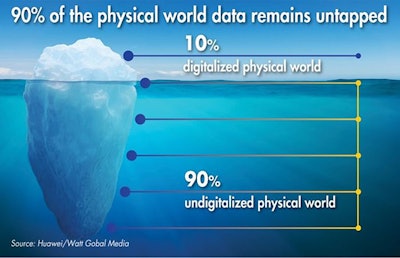
The rate of adoption of artificial intelligence (AI) driven technologies by the egg industry is likely to have grown during the COVID-19 pandemic, yet its use will need to grow further still if the industry is to take maximum advantage of the benefits the technologies can offer.
The past year has seen us all having to experiment with technologies such as video-conferencing or cloud file sharing as well as having to work remotely. Some of these ways or working were new to us, but we were quickly able to adjust and adapt.
Use of these new technologies will become increasingly important if we are to fully understand what is going on around us and turn this information to our benefit.
The world, not only the egg sector, is facing a critical issue. Only about 10% of data is available in a digitalized format and can be used for analysis and predictions. The vast majority of our data is not readily accessible.
The COVID-19 pandemic, having forced us to find ways to access data remotely, is accelerating the adoption of connected and integrated systems, where sensors and other Internet of things devices are able to continuously monitor what happens on farm. A few commercial systems are already available – so the technology is there - and the pandemic has provided an incentive for producers to try it.
Data tsunami?
The prediction that, by 2050, farms will generate, on average, 4.1 million data points also means that we will no longer be able to use our own analytical skills to understand the data. This is where artificial Intelligence will fall into place, allowing us to build algorithms where farm data can be used to predict specific outcomes.
There are already, for example, models where live production data can be used to predict drops in egg production 3-5 days in advance.
The use of AI-driven technologies allows us also to perform new types of research in areas that are critical to the industry. For instance, using birds equipped with radio-frequency identification devices, a team of Australian researchers has used AI-driven techniques for image analysis to better understand hen behavior in free-range systems. The use of big data will allow us to better design housing systems and improve our management of birds under various conditions.
If anyone still doubts the potential of AI in the egg sector, do not forget that AI has already been with us for some time, even though we may not have realized it.
Today, more than half of the world population are active social media users, submitting vast amounts of data that can easily be accessible for market segmentation and analytical purposes, making personalized marketing a cost-efficient reality.
Using the full potential of digital technologies, we now have the fantastic opportunity to be directly engaged with consumers, and to make a greater impact.
The COVID-19 pandemic has accelerated the digital revolution and it should offer an opportunity for egg producers to counteract the overwhelming power of large retailers.

















